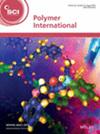求助PDF
{"title":"Anti-tumoural activity of 3D printed fluorohydroxyapatite–polylactic acid scaffolds combined with graphene oxide and doxorubicin","authors":"Maissa Agsous, Khireddine Hafit, Sabeha Yala, Busra Oktay, Ayşe Betül Bingöl, İlkay Şenel, Cem Bülent Üstündağ","doi":"10.1002/pi.6743","DOIUrl":null,"url":null,"abstract":"<p>This study focuses on the synthesis of fluorohydroxyapatite (FHA), and the realization of scaffolds by 3D printing using polylactic acid (PLA) as polymer and graphene oxide (GO). The synthesis of FHA was carried out by the usual sol–gel method. The realization of the 3D scaffold was achieved with the 3D printing method. Four scaffolds were printed with PLA: the first was made with FHA and PLA (FHA/PLA), the second was made with GO in addition to FHA and PLA (FHA/PLA/GO), and the third and fourth ones were the FHA/PLA and FHA/PLA/GO scaffolds coated with electrosprayed hydrogel solution of doxorubicin (DOX) and polyvinyl alcohol (PVA): FHA/PLA/DOX/PVA and FHA/PLA/GO/DOX/PVA. The FHA and GO powders were characterized using Fourier transform infrared analysis and X-ray diffraction analysis. A dissolution study was carried out with different contents of PVA (2.5%, 3% and 4%) to identify the scaffold with the best drug release profile. The 3% w/w PVA hydrogel solution was the best, so the drug release kinetics and drug release mechanism were studied using the most famous mathematical models: zero-order model, Higuchi's model and Korsmeyer–Peppas model (power law model). The porosity of the 3D printed scaffolds was assessed by SEM and, finally, the cellular response of each scaffold on the viability of CDD human fibroblast cells was evaluated using the 3-(4,5-dimethylthiazol-2-yl)-2,5-diphenyltetrazolium bromide (MTT) assay. The sol–gel synthesis produces FHA, used in the realization of the scaffolds. The scaffolds have mixed porosity (macropores and micropores) promoting cell adhesion and proliferation, as shown by the results of the MTT assay. The addition of GO decreases the cell viability but keeps the scaffolds still biocompatible, and adding both DOX and GO to the FHA/PLA scaffolds has a negative impact on cell viability because DOX and GO remain toxic at the given percentages. © 2025 Society of Chemical Industry.</p>","PeriodicalId":20404,"journal":{"name":"Polymer International","volume":"74 3","pages":"277-285"},"PeriodicalIF":2.9000,"publicationDate":"2025-01-09","publicationTypes":"Journal Article","fieldsOfStudy":null,"isOpenAccess":false,"openAccessPdf":"","citationCount":"0","resultStr":null,"platform":"Semanticscholar","paperid":null,"PeriodicalName":"Polymer International","FirstCategoryId":"92","ListUrlMain":"https://onlinelibrary.wiley.com/doi/10.1002/pi.6743","RegionNum":4,"RegionCategory":"化学","ArticlePicture":[],"TitleCN":null,"AbstractTextCN":null,"PMCID":null,"EPubDate":"","PubModel":"","JCR":"Q2","JCRName":"POLYMER SCIENCE","Score":null,"Total":0}
引用次数: 0
引用
批量引用
Abstract
This study focuses on the synthesis of fluorohydroxyapatite (FHA), and the realization of scaffolds by 3D printing using polylactic acid (PLA) as polymer and graphene oxide (GO). The synthesis of FHA was carried out by the usual sol–gel method. The realization of the 3D scaffold was achieved with the 3D printing method. Four scaffolds were printed with PLA: the first was made with FHA and PLA (FHA/PLA), the second was made with GO in addition to FHA and PLA (FHA/PLA/GO), and the third and fourth ones were the FHA/PLA and FHA/PLA/GO scaffolds coated with electrosprayed hydrogel solution of doxorubicin (DOX) and polyvinyl alcohol (PVA): FHA/PLA/DOX/PVA and FHA/PLA/GO/DOX/PVA. The FHA and GO powders were characterized using Fourier transform infrared analysis and X-ray diffraction analysis. A dissolution study was carried out with different contents of PVA (2.5%, 3% and 4%) to identify the scaffold with the best drug release profile. The 3% w/w PVA hydrogel solution was the best, so the drug release kinetics and drug release mechanism were studied using the most famous mathematical models: zero-order model, Higuchi's model and Korsmeyer–Peppas model (power law model). The porosity of the 3D printed scaffolds was assessed by SEM and, finally, the cellular response of each scaffold on the viability of CDD human fibroblast cells was evaluated using the 3-(4,5-dimethylthiazol-2-yl)-2,5-diphenyltetrazolium bromide (MTT) assay. The sol–gel synthesis produces FHA, used in the realization of the scaffolds. The scaffolds have mixed porosity (macropores and micropores) promoting cell adhesion and proliferation, as shown by the results of the MTT assay. The addition of GO decreases the cell viability but keeps the scaffolds still biocompatible, and adding both DOX and GO to the FHA/PLA scaffolds has a negative impact on cell viability because DOX and GO remain toxic at the given percentages. © 2025 Society of Chemical Industry.



